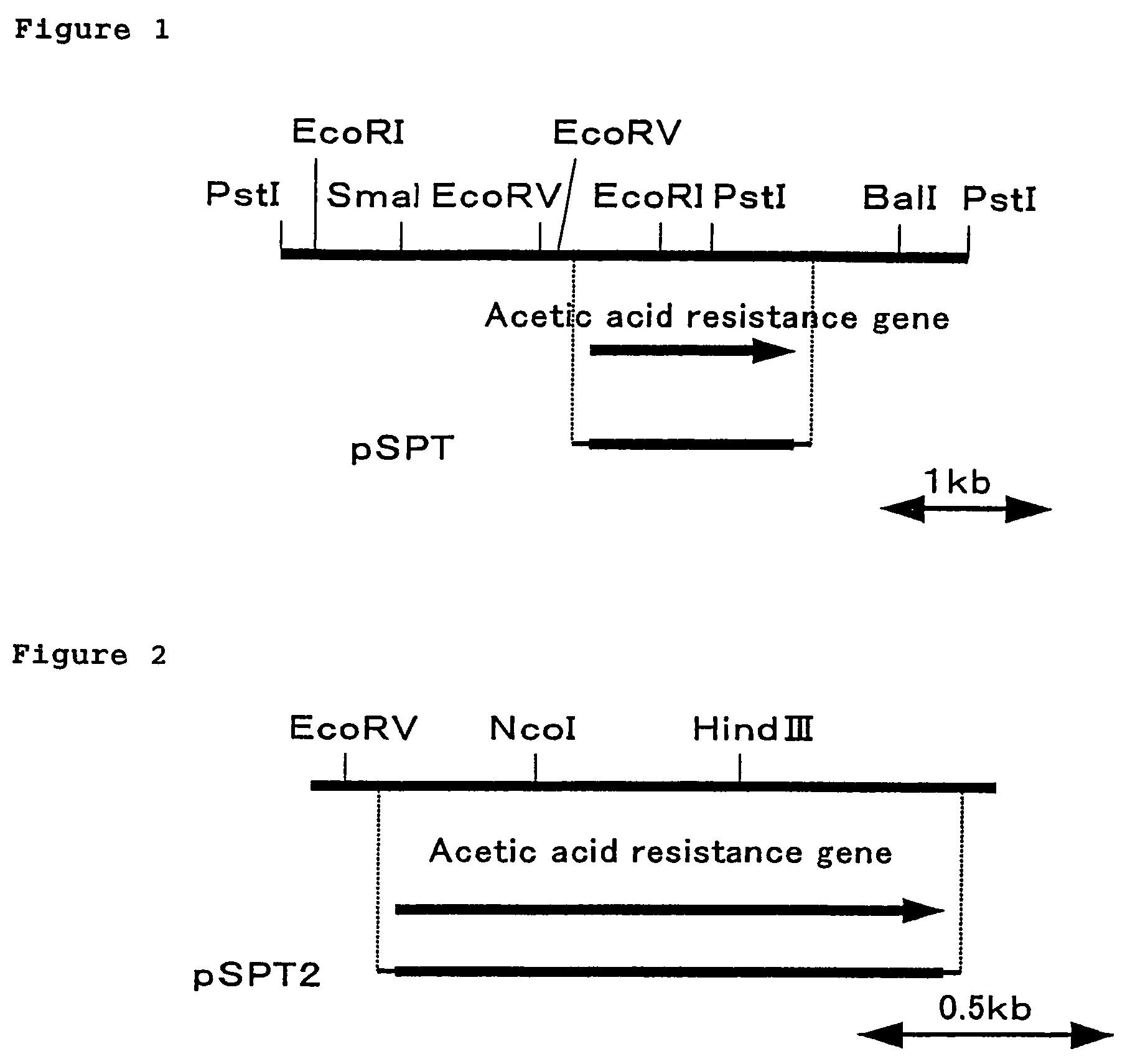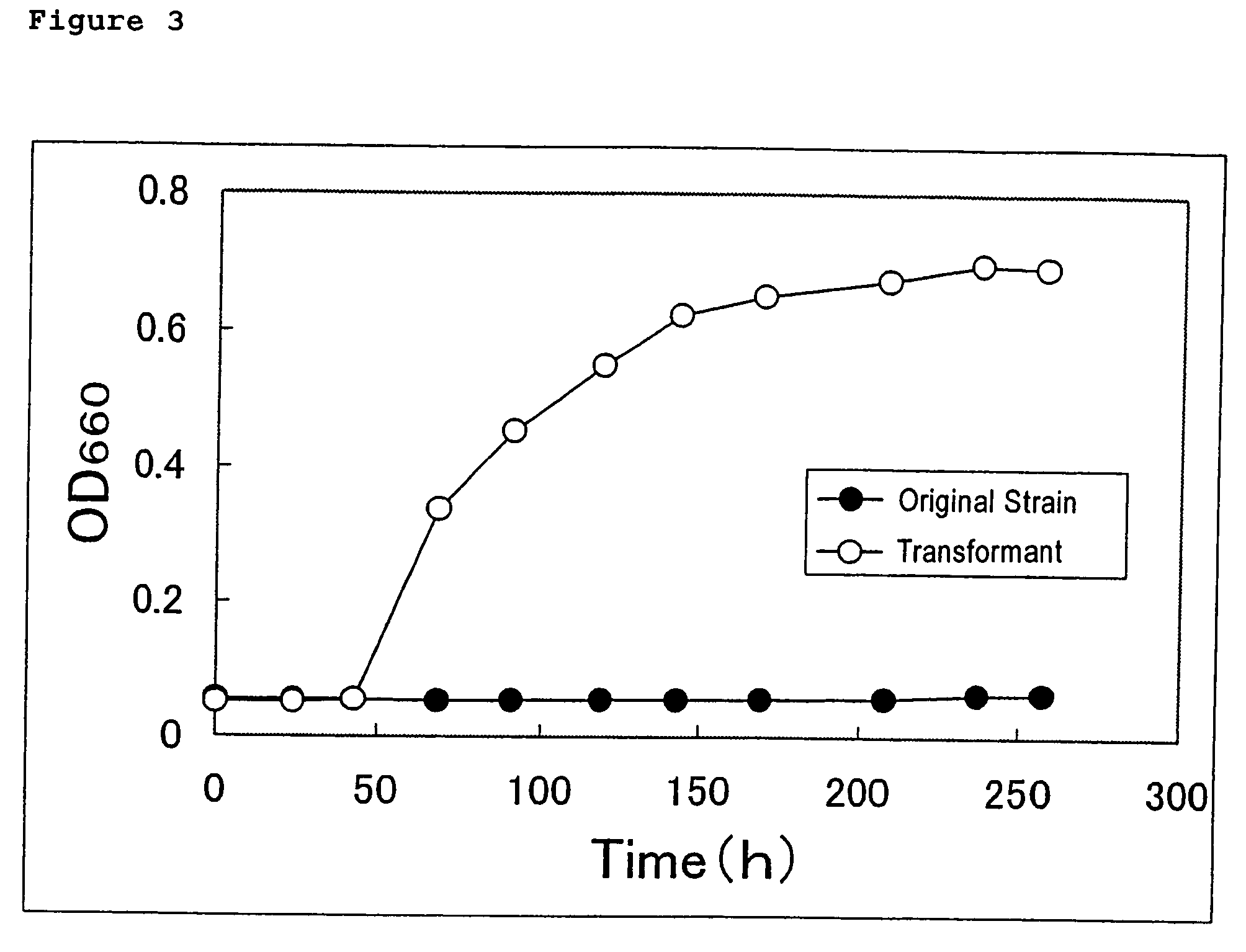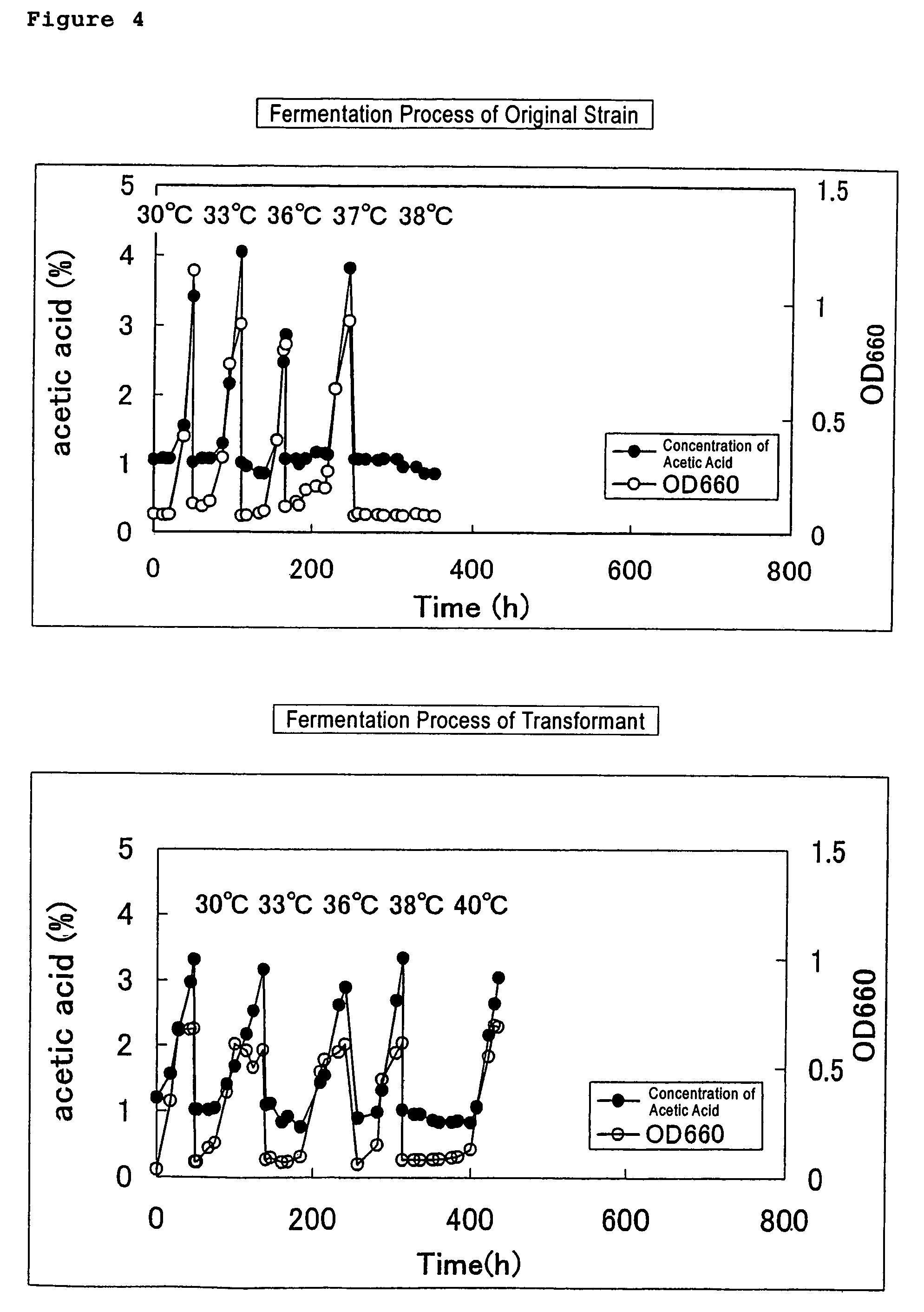Gene participating in acetic acid tolerance, acetic acid bacteria bred using the gene, and process for producing vinegar with the use of the acetic acid bacteria
a technology of acetic acid and gene, which is applied in the direction of bacteria peptides, peptide sources, enzymology, etc., can solve the problem of not concluding whether the gene encoding aldh is the exact acetic acid, and achieves the effect of improving tolerance against acetic acid, efficient accumulation of acetic acid, and tolerating acetic acid
- Summary
- Abstract
- Description
- Claims
- Application Information
AI Technical Summary
Benefits of technology
Problems solved by technology
Method used
Image
Examples
example
Example 1
Cloning of Acetic Acid Resistance-Genes from Gluconacetobacter entanii and Determination of the Nucleotide Sequence and the Deduced Amino Acid Sequence
(1) Generation of Chromosomal DNA Library
[0102]Acetbacter altoacetigenes MH-24 strain (FERMBP-491), that is one strain of Gluconacetobacter entanii was performed shaking culture at 30° C. on YPG medium (3% glucose, 0.5% yeast extract, and 0.2% polypeptone) added 6% acetic acid and 4% ethanol. After the cultivation, culture medium was centrifuged (7,500×g, 10 min) and bacterial cells were obtained. Chromosomal DNA was prepared from the obtained bacterial cells by the method disclosed in patent literature 3.
[0103]The obtained chromosomal DNA as explained above was partially digested by restriction enzyme PstI (Takara Shuzo Co., LTD.), further the Escherichia coli-acetic acid bacteria shuttle vector pMV24 was completely digested by restriction enzyme PstI. These types of DNA were mixed by adequate dose, ligated by using ligatio...
example 2
Enhancement of Acetic Acid Tolerance in Transformant, Transformed with Acetic Acid Resistance-Gene Derived from Gluconacetobacter entanii
(1) Transformation of Acetobacter aceti
[0110]Acetic acid resistance-gene derived from Acetobacter altoacetigenes MH-24 strain (FERM BP-491) cloned as explained above, was amplified by PCR method with KOD-Plus—(TOYOBO Co., LTD.), and plasmid pSPT in which the amplified DNA fragment was inserted into restriction enzyme SmaI cleavage site of the acetic acid bacteria-Escherichia coli shuttle vector pMV24 (see non-patent literature 3, for instance), was constructed. The outline of amplified fragment inserted into pSPT is shown in FIG. 1.
[0111]PCR method was performed as follows; i.e. PCR method was performed using genomic DNA derived from above-mentioned acetic acid bacterium as template and using primer 1 (the nucleotide sequence thereof is shown in SEQ. ID No. 5 (FIG. 7)) and primer 2 (the nucleotide sequence thereof is shown in SEQ. ID No. 6 (FIG. ...
example 3
Acetic Acid Fermentation of the Transformant Transformed with Acetic Acid Resistance-Gene Derived from Gluconacetobacter entanii
[0123]The ampicillin-resistant transformant having plasmid pSPT obtained in Example 2 was compared with fermentation ability to that of the original strain of Acetobacter aceti No. 1023 having only shuttle vector pMV24.
[0124]Specifically, they were cultured with agitation rate at 400 rpm, aeration rate at 0.20 vvm and temperature of 30° C. in 2.5 L of YPG medium containing 1% acetic acid, 4% ethanol and 100 μg / ml of ampicillin using 5L of mini-jar fermenter (Mitsuwa Rikagaku Kogyo Co.; KMJ-5A), and fermented up to 3% acetic acid concentration. Then, the culture medium was withdrawn from the mini-jar fermenter with 700 ml of it left, 1.8 L of YPG medium containing 100 μg / ml of ampicillin was newly added, it was adjusted to the concentration of 4% ethanol and 1% acetic acid, and fermentation was thus restarted. The concentration of ethanol in the medium was ...
PUM
| Property | Measurement | Unit |
|---|---|---|
| temperature | aaaaa | aaaaa |
| temperature | aaaaa | aaaaa |
| concentration | aaaaa | aaaaa |
Abstract
Description
Claims
Application Information
 Login to View More
Login to View More - R&D
- Intellectual Property
- Life Sciences
- Materials
- Tech Scout
- Unparalleled Data Quality
- Higher Quality Content
- 60% Fewer Hallucinations
Browse by: Latest US Patents, China's latest patents, Technical Efficacy Thesaurus, Application Domain, Technology Topic, Popular Technical Reports.
© 2025 PatSnap. All rights reserved.Legal|Privacy policy|Modern Slavery Act Transparency Statement|Sitemap|About US| Contact US: help@patsnap.com



